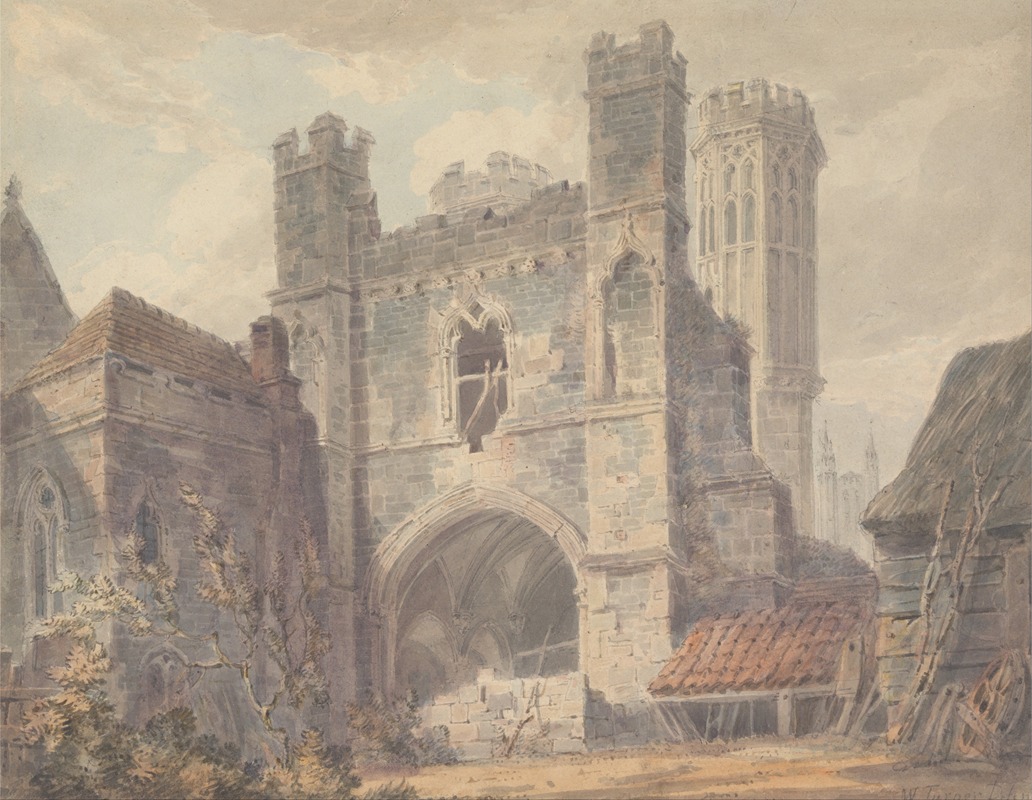
St. Augustine’s Gate, Canterbury
A hand-painted replica of Joseph Mallord William Turner’s masterpiece St. Augustine’s Gate, Canterbury, meticulously crafted by professional artists to capture the true essence of the original. Each piece is created with museum-quality canvas and rare mineral pigments, carefully painted by experienced artists with delicate brushstrokes and rich, layered colors to perfectly recreate the texture of the original artwork. Unlike machine-printed reproductions, this hand-painted version brings the painting to life, infused with the artist’s emotions and skill in every stroke. Whether for personal collection or home decoration, it instantly elevates the artistic atmosphere of any space.
"St. Augustine’s Gate, Canterbury" is a watercolor painting created by the renowned British artist Joseph Mallord William Turner (1775–1851). Turner, celebrated for his mastery in capturing light, atmosphere, and the sublime in landscapes, produced this work as part of his extensive exploration of British historical and architectural subjects.
The painting depicts St. Augustine’s Gate, an iconic structure in Canterbury, England, which served as the entrance to St. Augustine’s Abbey. The abbey, founded in 598 AD by St. Augustine, was one of the most significant monastic sites in medieval England and played a central role in the Christianization of Anglo-Saxon England. The gate itself, constructed in the 14th century, is a fine example of medieval Gothic architecture, characterized by its pointed arches and intricate stonework.
Turner’s watercolor captures the gate with a sense of atmospheric depth, employing his signature use of light and color to evoke a mood of historical reverence. The painting is believed to have been created during one of Turner’s travels through Kent, a region he frequently visited to document its landscapes and architectural landmarks. His works from this period often reflect his interest in England’s rich historical heritage and its interplay with the natural environment.
As with many of Turner’s watercolors, "St. Augustine’s Gate, Canterbury" demonstrates his innovative techniques, including the use of washes and layered pigments to create a luminous effect. The painting is part of a larger body of work in which Turner explored themes of history, architecture, and the passage of time.
The exact date of the painting’s creation is not definitively recorded, but it is generally attributed to the early 19th century, a period when Turner was actively producing watercolors for both private patrons and public exhibitions. The work is now housed in the collection of the Tate in London, which holds a significant number of Turner’s pieces, including sketches, watercolors, and oil paintings.
"St. Augustine’s Gate, Canterbury" is a testament to Turner’s ability to blend architectural precision with artistic expression, offering viewers a glimpse into England’s medieval past through the lens of one of its most celebrated artists.












